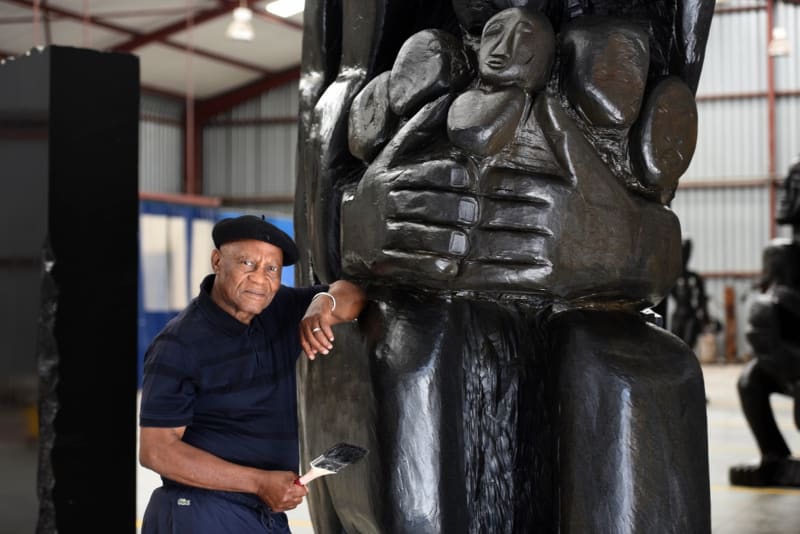The 77-year-old artist spoke to ART AFRICA in an all-encompassing conversation that touched on his origins as an artist, his favourite materials and the state of contemporary art in South Africa today.
“I started as a traditional healer, and that led me to art,” says the sculptor, poet and academic, Pitika Ntuli. He remembers being initiated by his uncle, who asked him to sit before a dead tree until it spoke to him. The tree remained silent until the young Ntuli started to imagine how it would look if it were a human being, “I saw the branches and shouted ‘Viva,’ then my uncle said, ‘it looks like the tree has spoken to you.’” In his meditative state, Ntuli saw figures in the wood – a long time before he became a sculptor. Later, when he was already in exile, he took a hammer and chisel and started to carve a dead piece of wood and brought forth the person his uncle wanted him to see. According to the artist, his healing, spirituality and sculpture all emanate from this moment.
Sculpture is a fusion of the artist’s poetry, spirituality and individual expression. David Koloane once wrote, “Although there have been great African sculptors before Pitika, he differs significantly from them all, both because of the broad range of materials he uses and because of his extraordinary ability to be true to each material he chooses to work in.” Beyond the wood, Pitika Ntuli works across a range of materials such as bone, granite, metal and found objects, “ I choose my material depending on what I’m feeling at a particular time and what I want to do,” says Ntuli. He turns to the bone when he wants to evoke a particular spiritual feeling, and he finds that found objects are laden with symbols and takes great pleasure in helping these everyday objects to attain their ideal by freeing them from menial use, “By subjecting an object and using it for what it is not meant to be used stretches people’s imagination,” he says.


